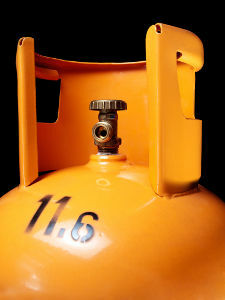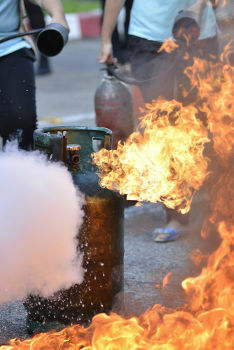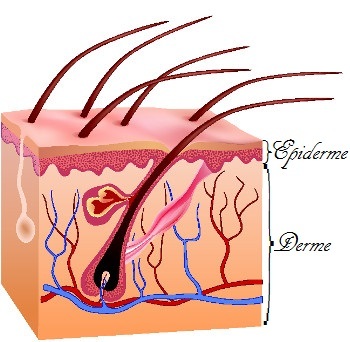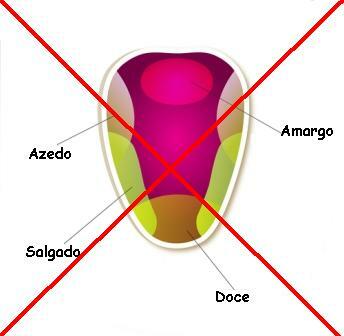It is very common to hear from people always the same answer to the following question: What's in the kitchen gas canister? The most common answer is that, inside the cylinder, there is a type of gas.
♦ What's inside the cylinder?
The material present inside the cylinder is the LPG, acronym for Liquefied petroleum gas. As the name itself (liquefied – gas transformed into liquid) indicates, inside the gas cylinder, there is a homogeneous liquid mixture. That's right! Inside the cylinder, we have a liquid – and not a gas – formed by the mixture of some substances.
♦ Why is there a liquid mixture?
In the liquid state, the molecules that make up substances are closer to each other. Thus, there are a greater number of molecules, but that occupy a reduced space. If the cylinder were filled with gas, the amount of molecules present in its interior would be smaller and we would have to buy a new cylinder in a shorter period of time.
If you ask an adult to shake a gas canister close to your ears, you will surely hear the movement of the liquid material inside the cylinder, as if there were a certain amount of Water.
LPG or cooking gas is a homogeneous mixture (all its components are soluble among themselves) obtained from the fractional distillation of Petroleum. All components of this mixture are kept in a liquid state due to the high pressures. See the main substances that make up the GLP:
♦ Substances that make up the LPG
Propane: organic substance that has in its composition four carbon atoms and eight hydrogen atoms, as we can see in the structural formula below:

Formula that features the carbons and hydrogens of propane
Butane: organic substance that has four carbon atoms and ten hydrogen atoms, as can be seen in the structural formula below:

Formula that features butane carbons and hydrogens
Propylene: organic substance that has three carbon atoms and six hydrogen atoms, as can be seen in the structural formula below:

Formula showing the carbons and hydrogens of propene
Butene: organic substance that has four carbon atoms and eight hydrogen atoms, as can be seen in the structural formula below:

Formula showing the carbons and hydrogens of butene
Pentane: organic substance that has five carbon atoms and twelve hydrogen atoms, as can be seen in the structural formula below:

Formula that features the carbons and hydrogens of pentane
As all the components of LPG are organic, it is a fuel, being burned always in the presence of oxygen gas and activation energy (a spark, for example). When combusted, the products generated are basically carbon dioxide, carbon monoxide and water in the form of steam. See two equations that represent the combustion of an LPG component:
Ç3H6 + 9/2O2 → 3 CO2 + 3 H2O
or
Ç3H6 + 3 O2 → 3 CO + 3 H2O
When bottled, the LPG is in a liquid state because it is kept that way at high pressures, which pressure is maintained inside the cylinder. When we activate the cylinder valve to release the gas and use the stove, there is a decrease in pressure, causing the liquid to change to a gaseous state.

Model of a type of gas cylinder valve
The main features of LPG are:
Colorless;
Odorless;
High combustion capacity;
Non toxic;
Asphyxiating.
To prevent further accidents, a substance called ethanethiol is mixed with LPG to provide a characteristic odor, which facilitates the perception of a leak. That way, if the gas is leaking, we can easily identify the smell. This measure is extremely necessary, considering that a gas leak can generate explosions of great proportions. Below is the structural formula of ethanethiol:

Chemical composition of ethanethiol

Combustion after gas escapes from a cylinder
By Me. Diogo Lopes Dias



